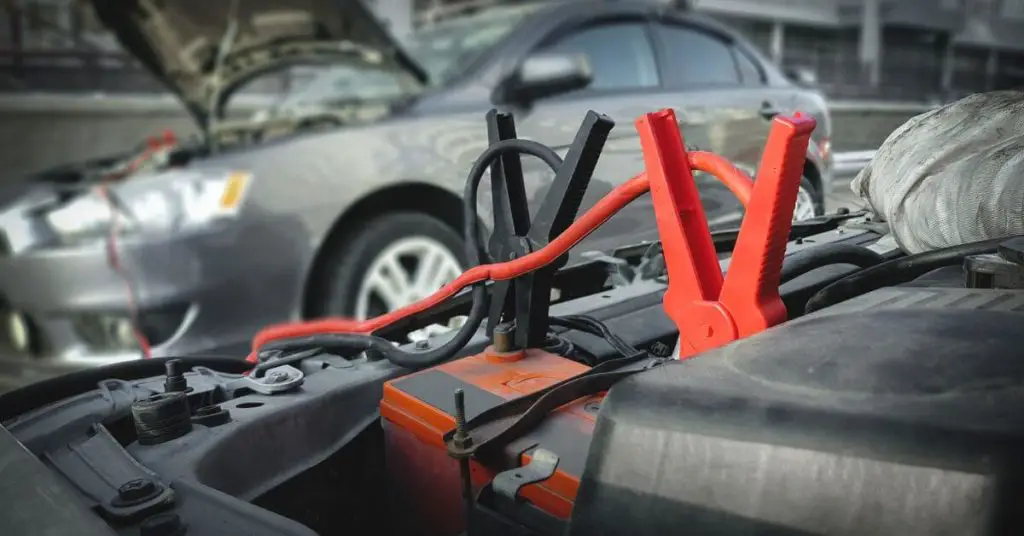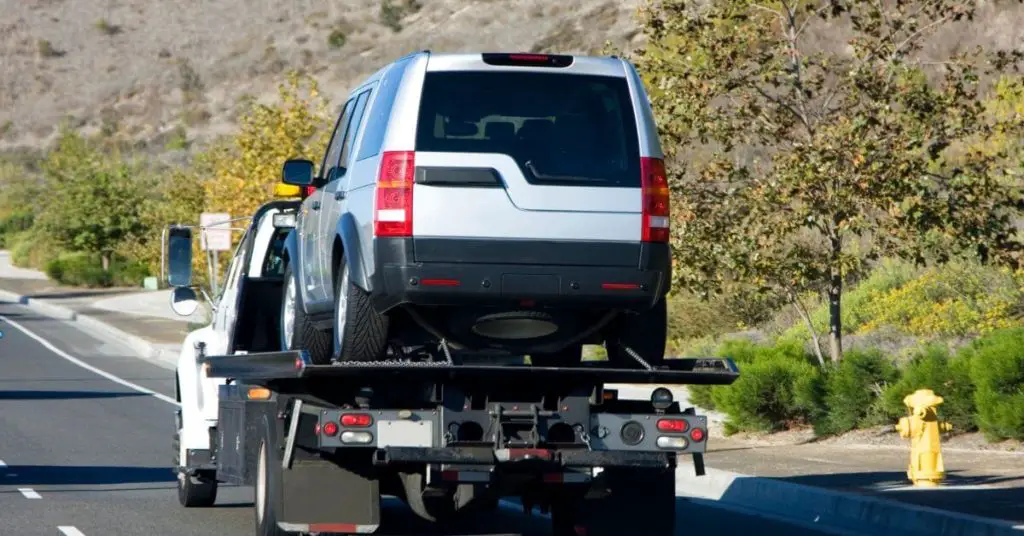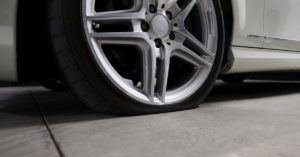Jump-starting a car can be a lifesaver, especially when you find yourself stranded on the side of the road with a dead battery.
But what about when it’s raining? Can you jump a car in the rain, or is it too dangerous to attempt?
Water and electricity do not mix well, and you may be worried about damaging your car battery and other electrical components or putting yourself in danger while trying to jump-start it.
While rain won’t prevent your vehicle from starting, it can affect the battery and cables and make the jump-starting process more challenging.

This blog post will cover everything you need to know about jumping a car safely in the rain, including safety considerations, factors affecting success, preparation steps, and alternative methods.
Table of Contents
What Happens When You Jump a Car?
This allows the alternator to take over and recharge the battery, which should start the engine.
Jumping a car is straightforward and does not take long, but it requires some caution, especially in wet conditions.
Is It Safe To Jump Start a Car In The Rain?
It is safe to jump-start a car in the rain if you take the proper precautions. Rain does not affect the jump-starting process but can increase the risk of electrical shock.
If you do not take the necessary steps to protect yourself and the vehicles.

Before jump-starting a car, you should ensure that both vehicles’ hoods are closed and that there is no standing water on the ground or the batteries.
Also, ensure that jumper cables clamps are dry before attempting to jump-start the car.
Factors Affecting the Success
Rain can cause moisture to build up on the car battery and cables, interfering with the electrical current and reducing efficiency.
Before attempting to jump a dead battery, it’s essential to check the battery, cables, and connections (positive-negative) to ensure they’re in good condition.
Here are some other factors that can affect the electricity and voltage
- The age and state of the car batteries and cables
- The type of car battery (lead-acid or lithium-ion)
- The strength of the electrical current
- The presence of rust or corrosion on the battery terminals and cables
It’s also important to note that a weak or dead battery may be unable to hold a charge, even if it’s successfully jumped. In this case, you must replace the battery to avoid future issues.
Risks of Jump Starting in the Rain
Jumping your car in the rain can be dangerous, with several risks. One of the biggest dangers is electrical shock.
Pouring rain can cause metal parts of the car and jump-starting equipment slippery and wet, making it easier for electrical current to escape and come into contact with your body.

Additionally, if the electrical wiring in your car is wet, there’s a risk of an electrical spark igniting fuel in the vehicle, leading to a fire.
Preparation
Before you start the jump-starting process, make sure you have the following equipment:
- Jumper cables
- Another vehicle with working car battery
- Rubber gloves
- Rain gear (boots, eye protection, jacket, etc.)
Step-by-Step Guide to Safely Attach And Disconnect Two Cables
Here are some proper steps to help you safely jump-start your car:
- Put on your rubber gloves and rain gear to protect yourself from electrical shock.
- Park the working car next to the vehicle with the dead battery, ensuring the cars are close enough to reach each other with the jumper cables.
- Turn off both cars and put on the emergency brake.
- Connect the red clamp to the positive (+) terminal on the working car’s battery.
- Connect the other end of the red clamp to the positive (+) terminal on the dead battery.
- Connect one end of the black jumper cable to the negative (-) terminal on the good battery
- Connect the other end of the black clamp to a solid, unpainted metal surface on the dead car’s engine block.
- Start the working vehicle and let it run for a few minutes.
- Try to start the car.
- If the dead car starts, remove the jumper cables in reverse order (black clip from the engine block, then the negative terminal, followed by the positive terminals).
Helpful Tips

- Always wear rubber gloves and rain gear to protect yourself from electrical shock.
- Make sure both cars are turned off before connecting the cables.
- Connect the cables in the correct order, ensuring the positive and negative cables are connected to the correct terminals.
- Please do not touch the cables together or allow them to touch any metal surface other than the batteries and the engine block.
Alternatives to Jump Starting in the Rain
If you’re unable to jump-start your car or if the process is too challenging, there are alternative methods you can use to get your vehicle started. Here are some options to consider:
Battery Charger: A battery charger is an excellent alternative to jumping on a car, especially in the rain. Connect the charger to your car’s battery and allow it to charge until it’s fully charged.
You can find portable battery chargers that are easy to use and store in your vehicle.
Towing: If the battery is completely dead and you cannot jump-start your car, consider towing the vehicle to a mechanic. A professional mechanic can diagnose the issue and make any necessary repairs.

Push Start: If your car has a manual transmission, you can push the vehicle to get it started. This method requires a few people to push the car and one to steer and brake. Once the vehicle is moving, pop the clutch to start the engine.
Maintaining Your Car’s Battery and Electrical System
Here are some tips to keep in mind:
- Keep the battery clean and free of corrosion.
- Make sure the battery is securely fastened in place.
- Avoid overcharging the battery by not leaving it connected to a charger for too long.
- Have the battery and electrical system checked by a mechanic regularly.
- It’s also a good idea to carry a set of jumper cables in your vehicle in case of emergencies. And if you’re planning a long road trip, consider bringing a battery charger or portable jump starter.
Is it safe to jump a car in the rain?
Jumping a car in the rain is safe if you take the necessary precautions, such as wearing rubber gloves, keeping the cables away from metal parts and water, and avoiding standing in puddles.
Can you jump a car in the rain with a dead battery?
Yes, you can jump a car in the rain with a dead battery, but it requires extra precautions to avoid electrical shock or damage to your vehicle.
Can you jump a car with a partially dead battery?
No, jumping a car with a partially dead battery is not recommended as it may not have enough power to start the engine and could cause damage to the alternator or the battery.
What should you do if the dead car doesn’t start after jumping?
If the vehicle doesn’t start after jumping, you should stop and check the cables to make sure they are connected correctly. If everything looks OK, it could be a problem with the battery or the alternator, and you should have it checked by a professional.
Can you jump a car in the rain with a portable jump starter?
Yes, you can jump a car in the rain with a portable jump starter, but you should still take the necessary precautions, such as keeping the cables away from metal parts and water and avoiding standing in puddles. Portable jump starters are a convenient alternative to traditional jump cables and can be a lifesaver in emergencies.
Conclusion
Jump start a car in the rain is safe if you take the proper precautions and follow the steps outlined in this guide. You can jump-start your car and get back on the road in no time, even in the rain.
Resources:
WikiHow: How to Jump-Start a Car in the Rain
The Drive: How to Jump-Start a Car in the Rain




